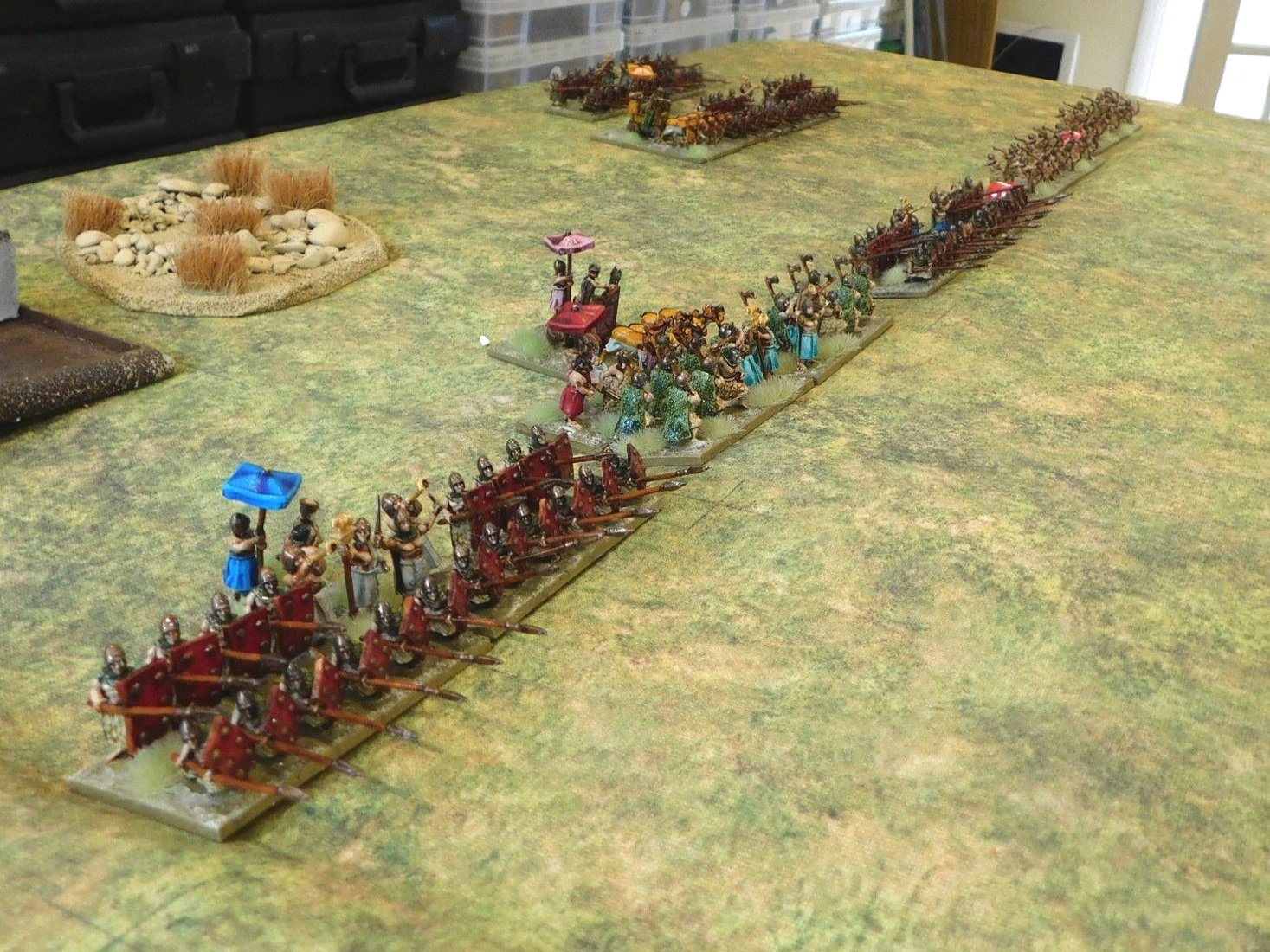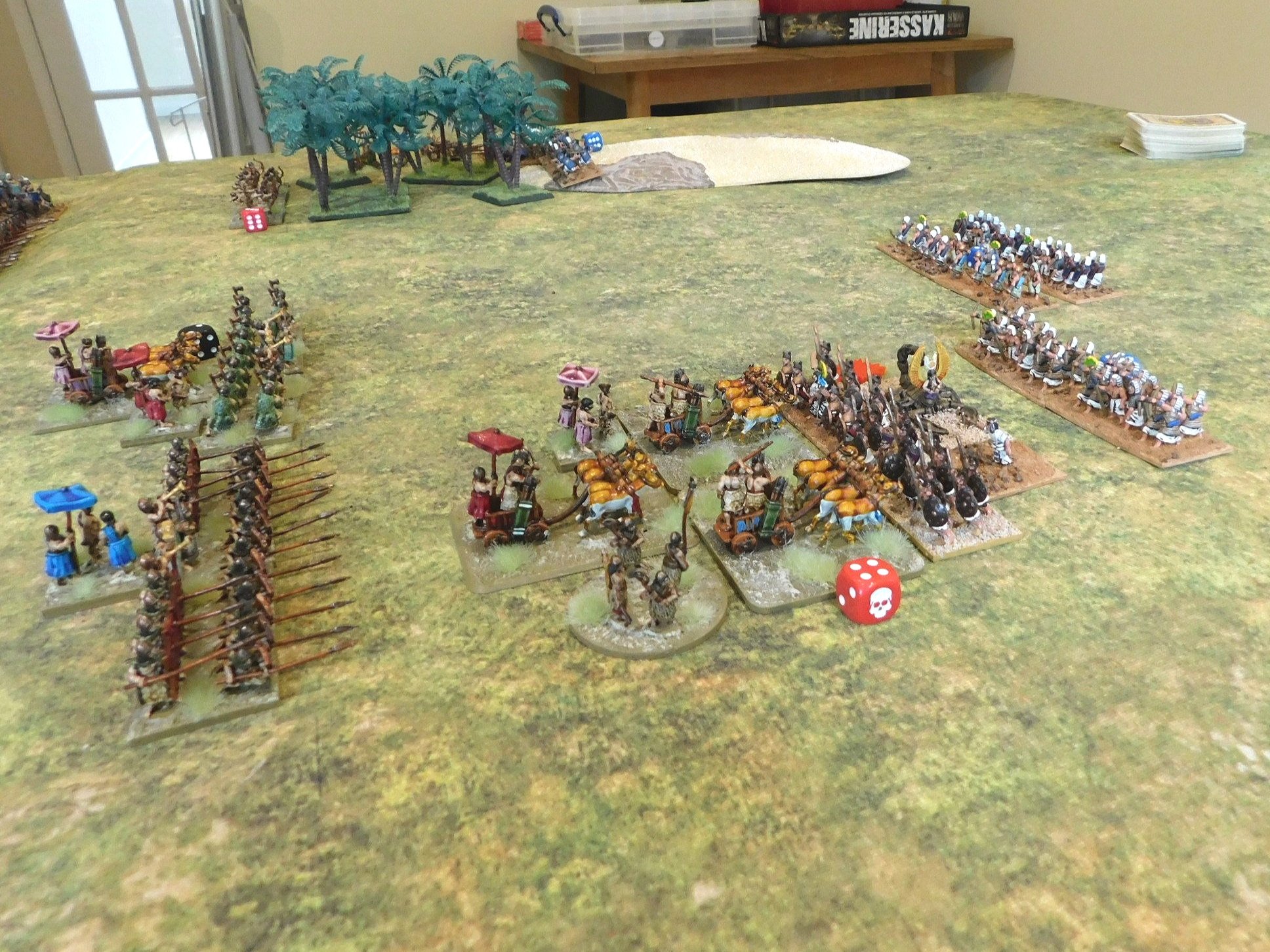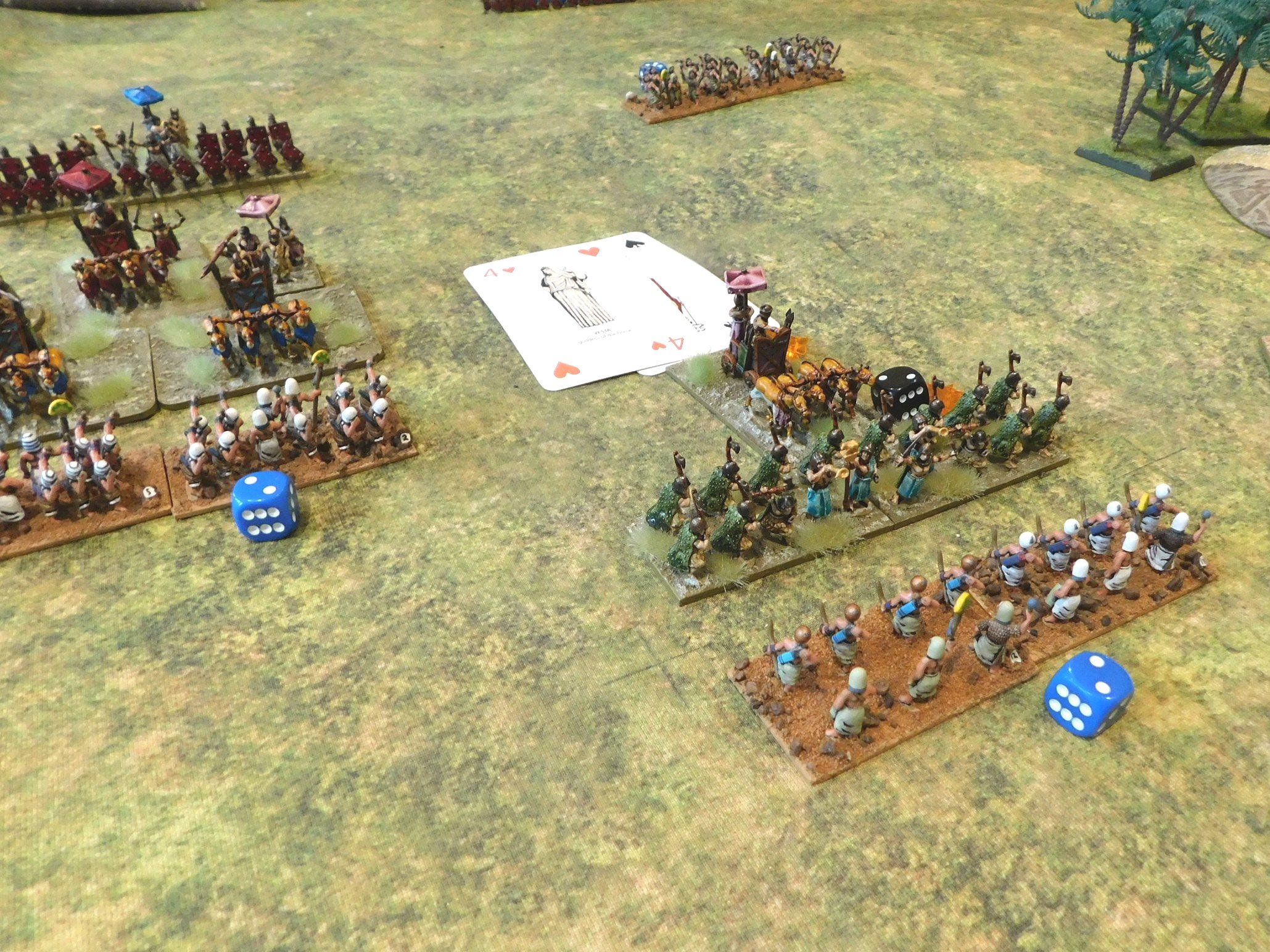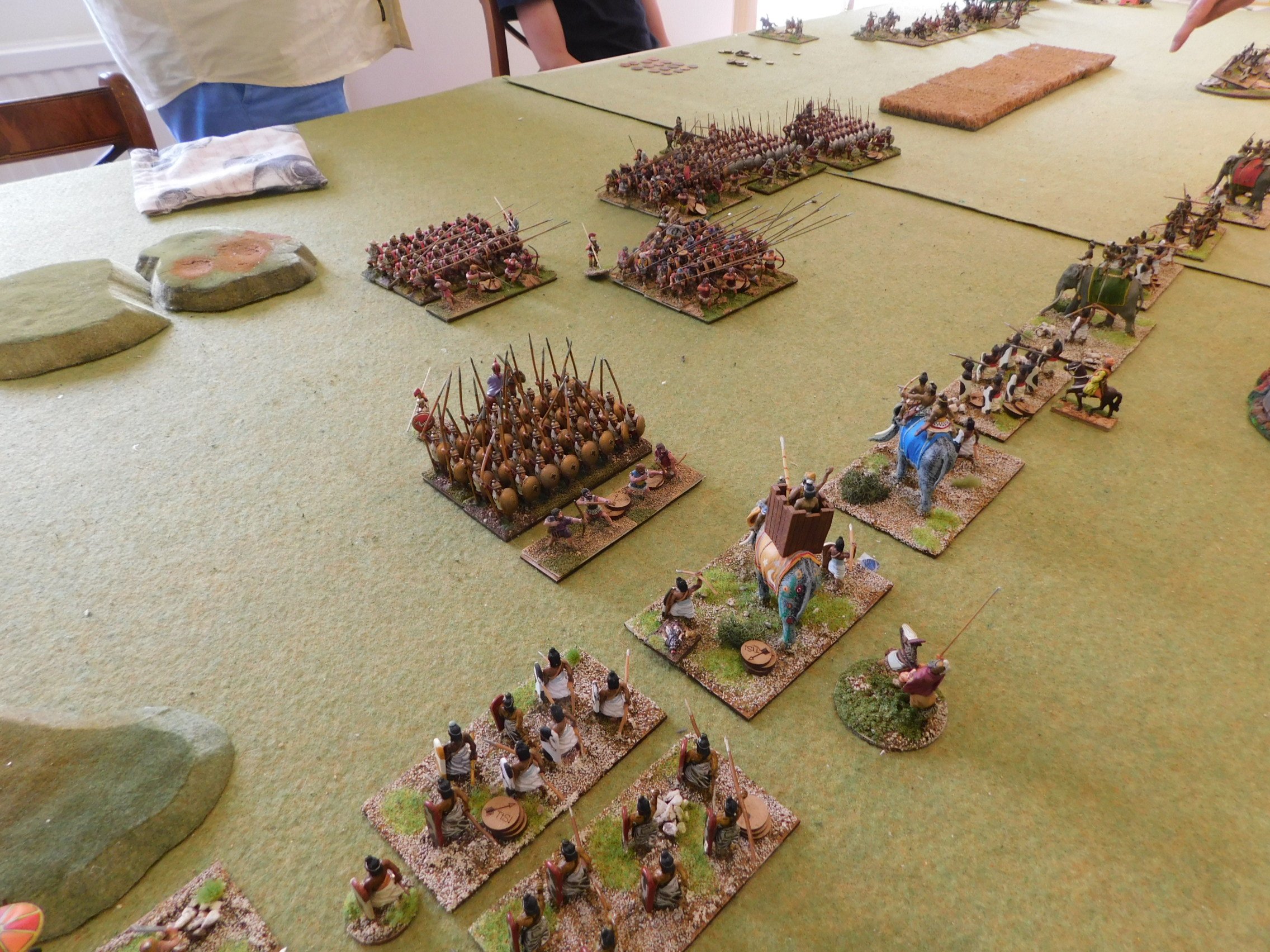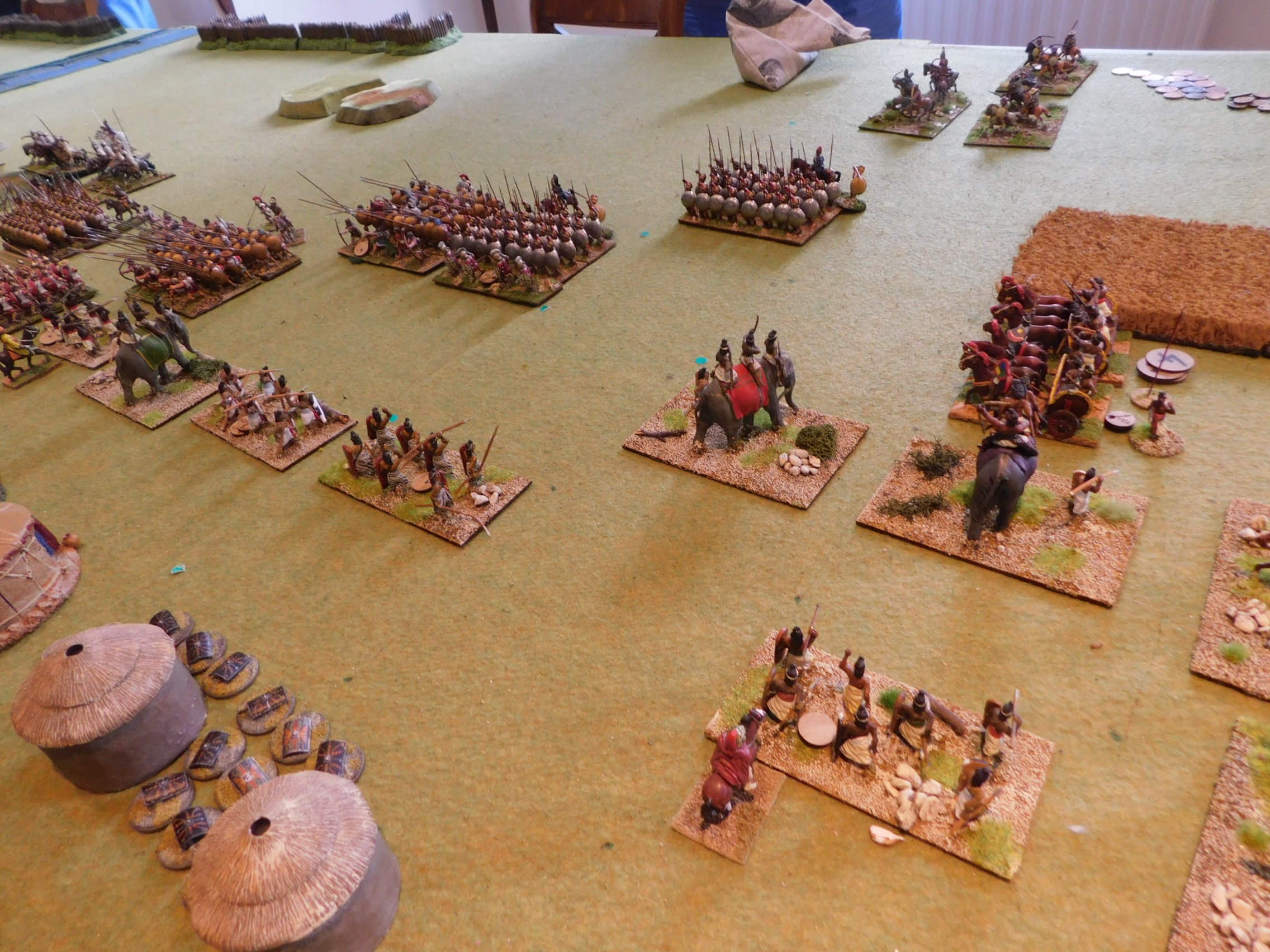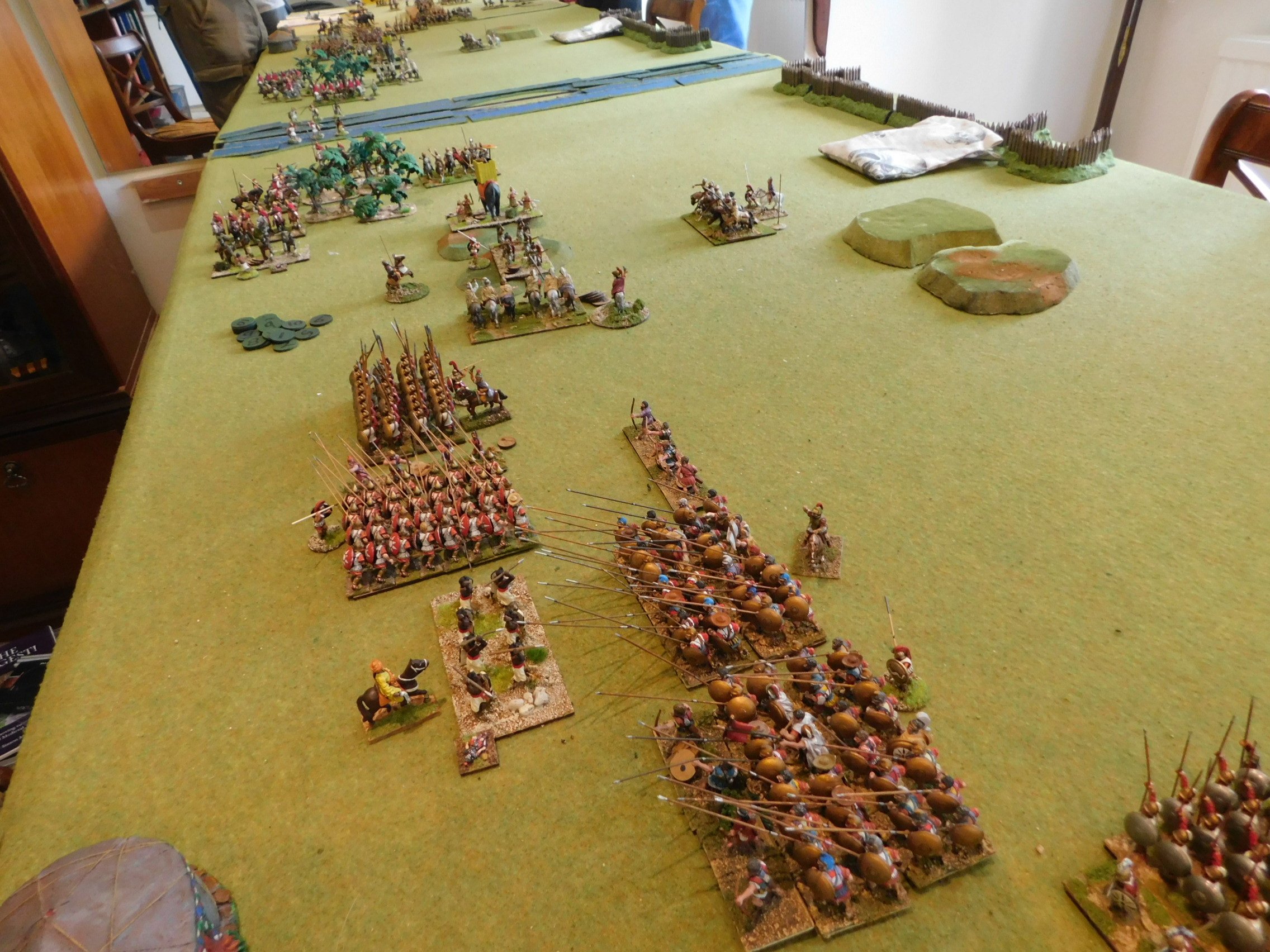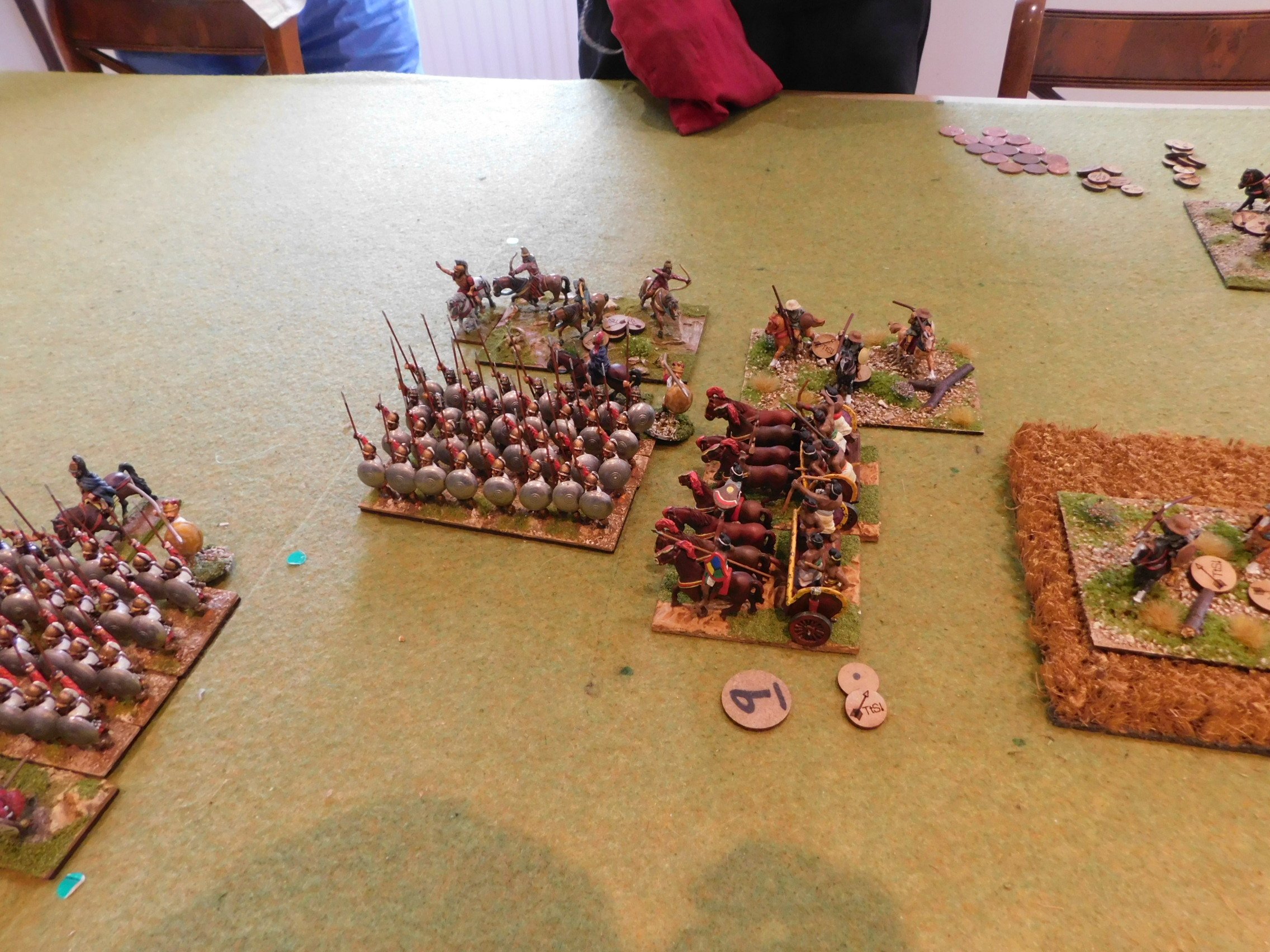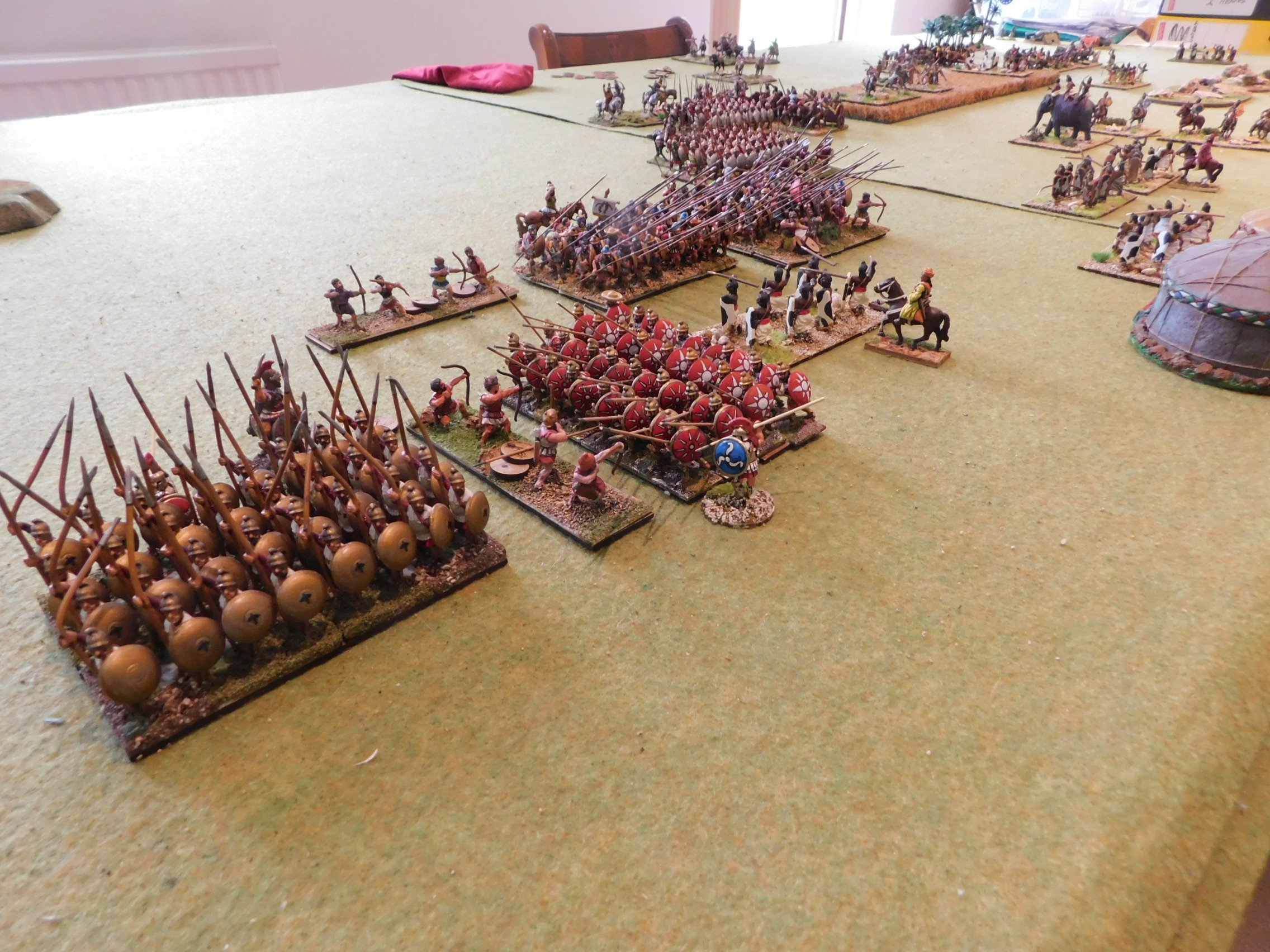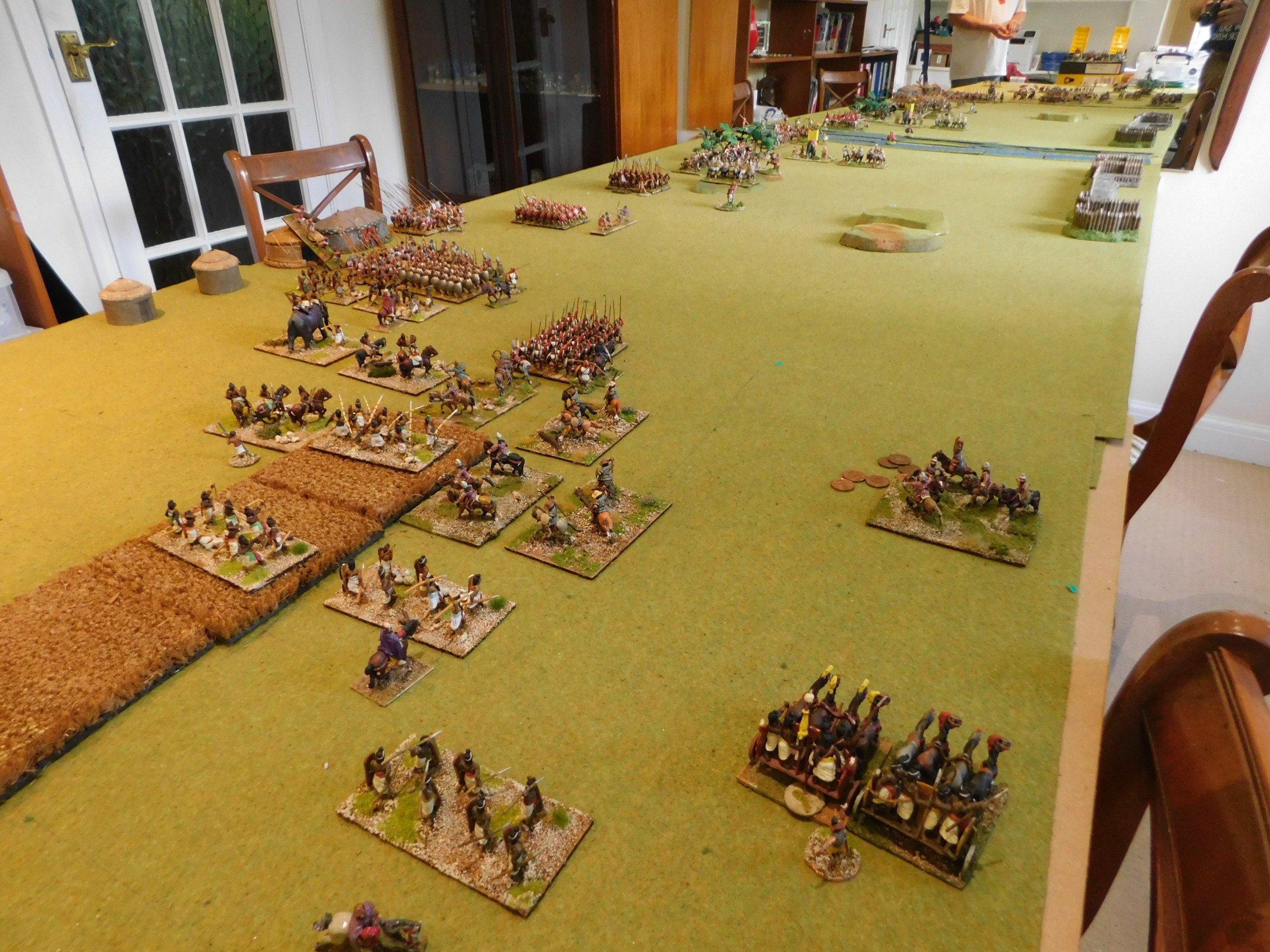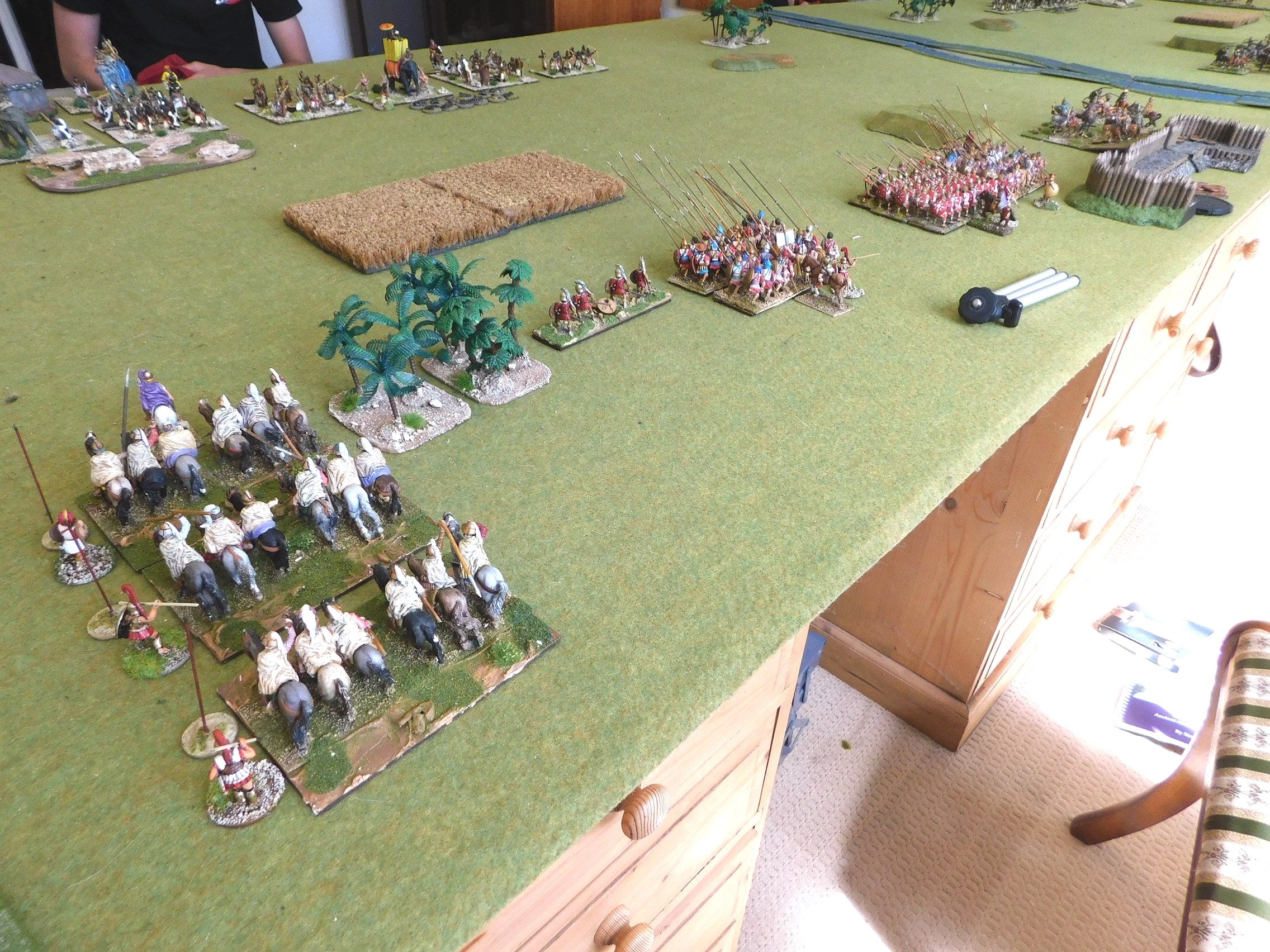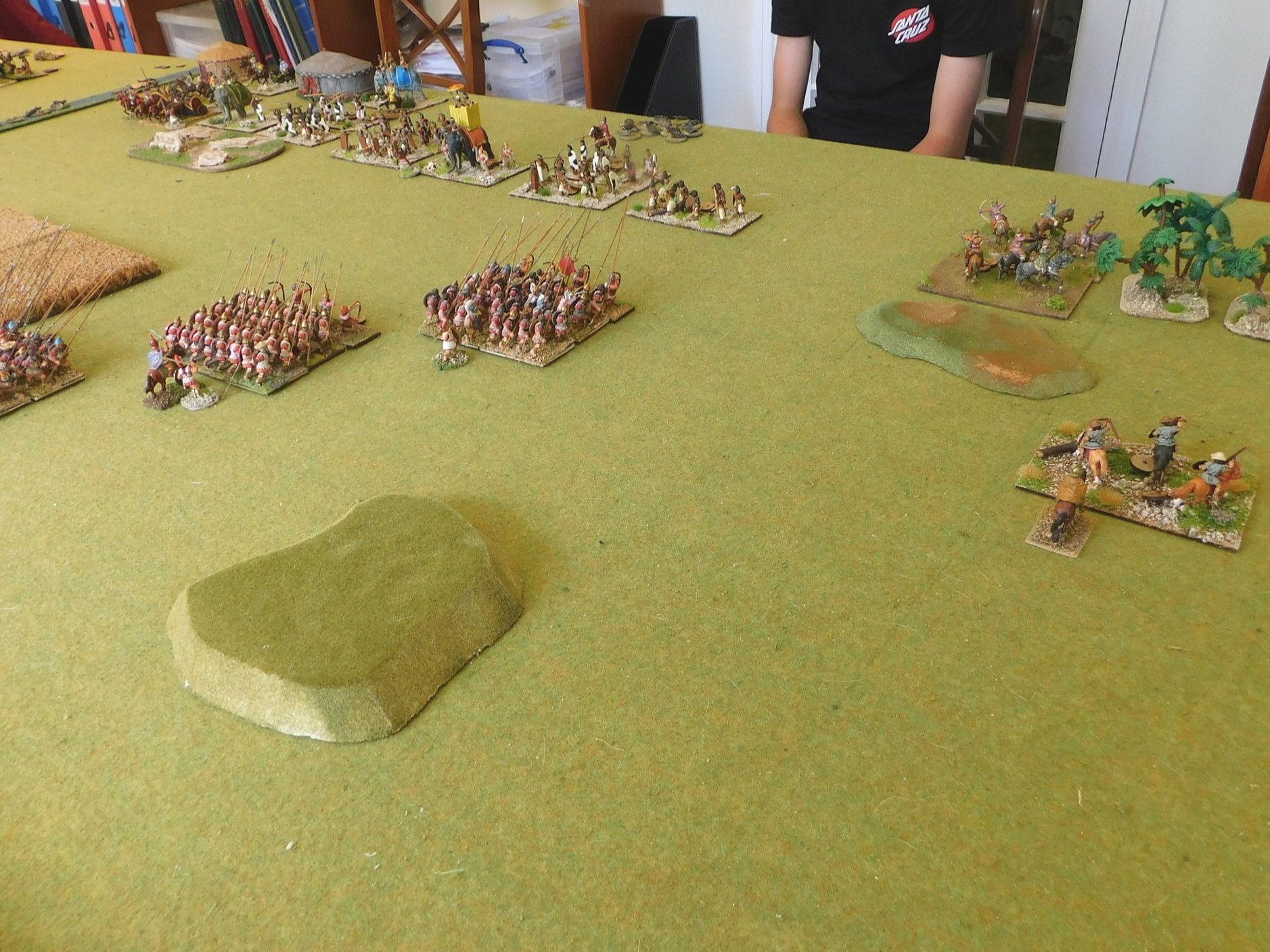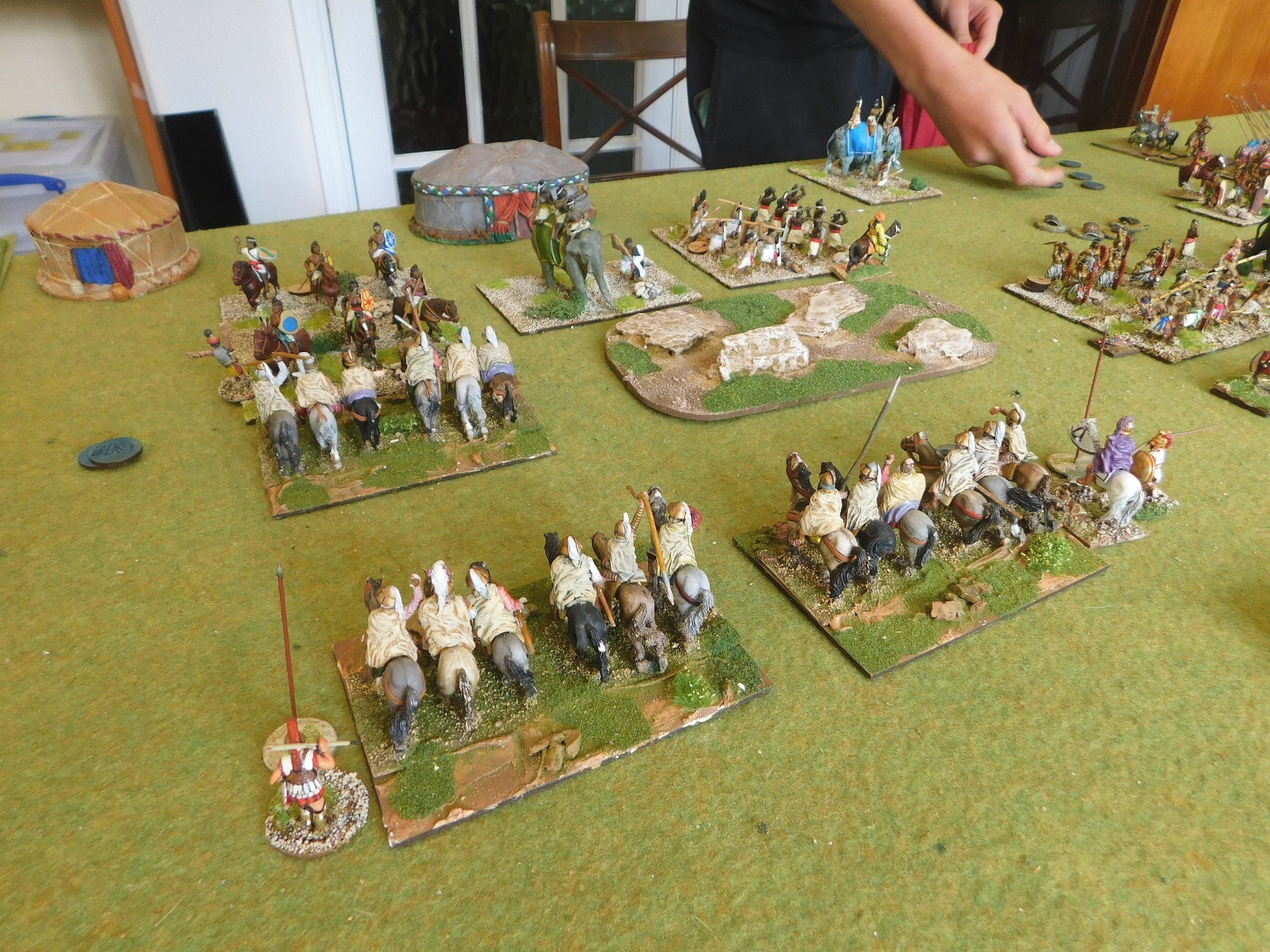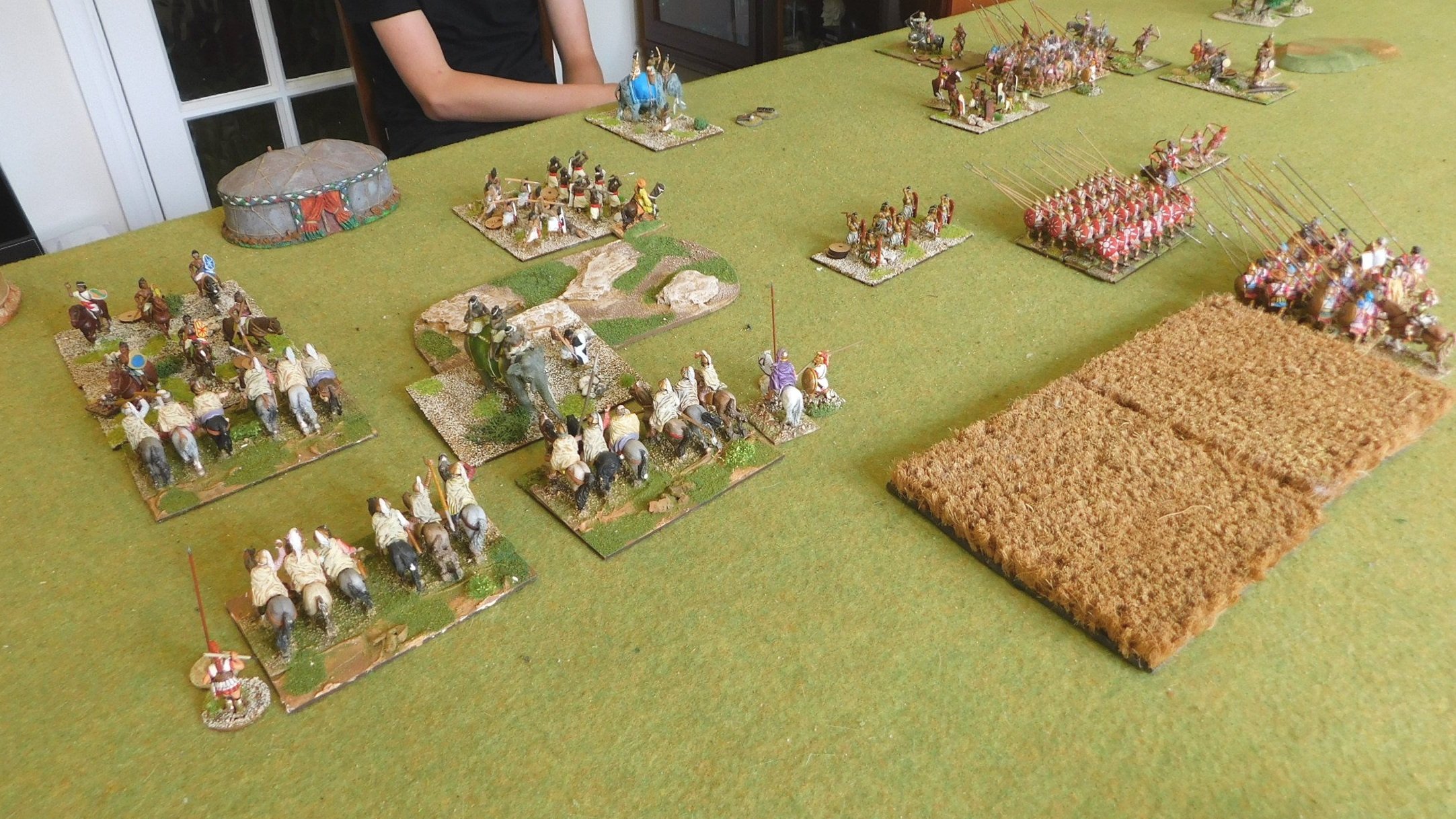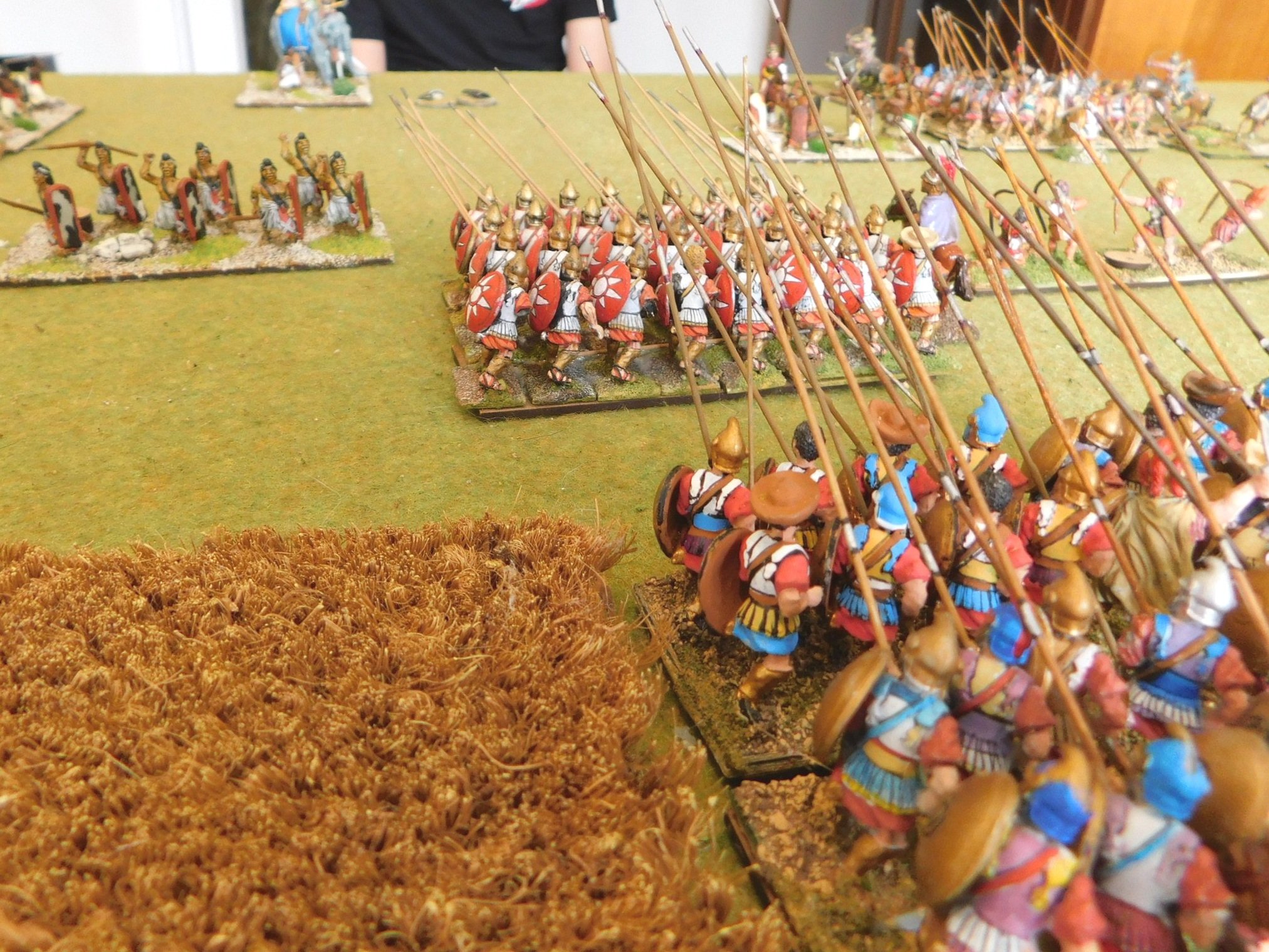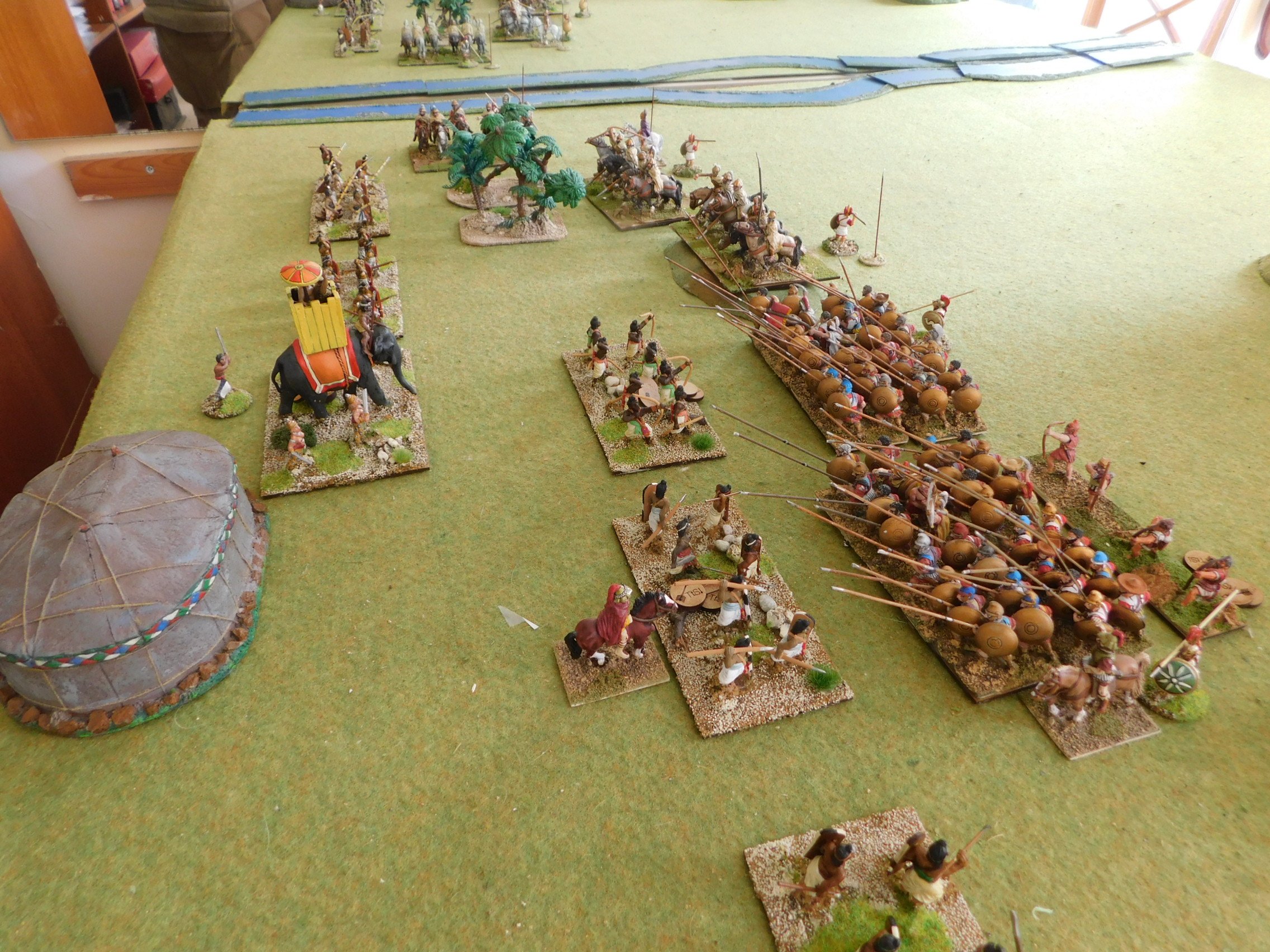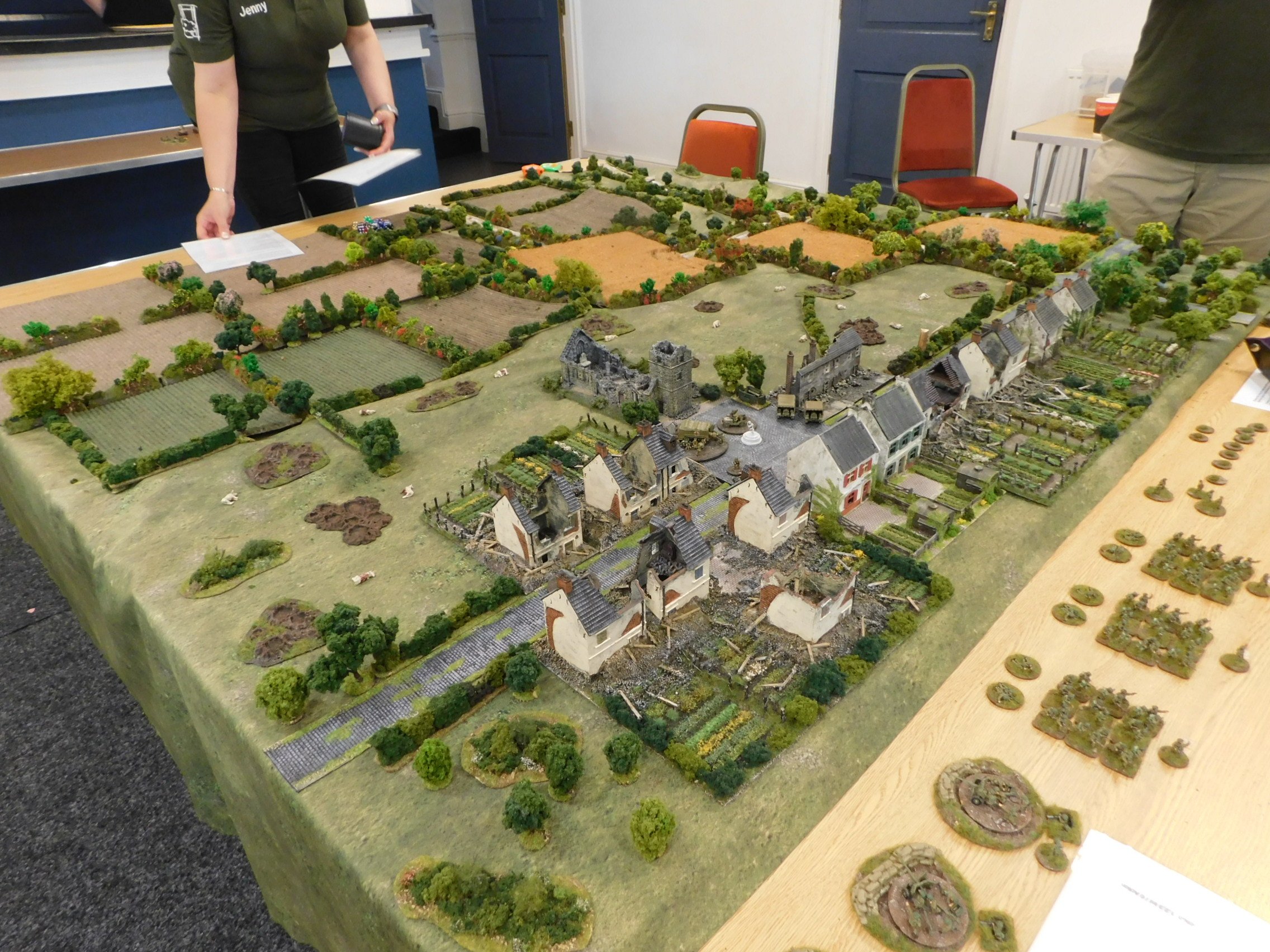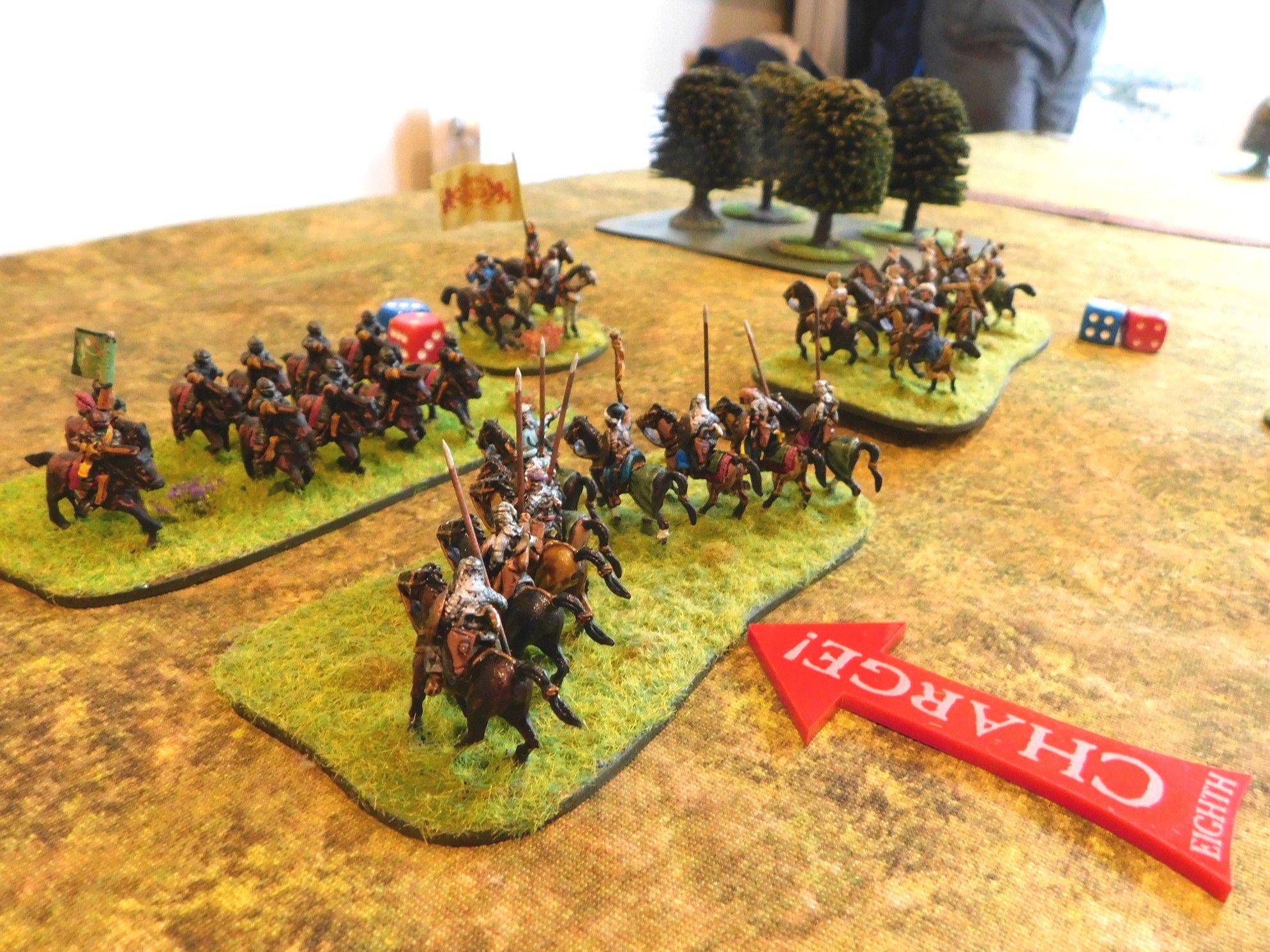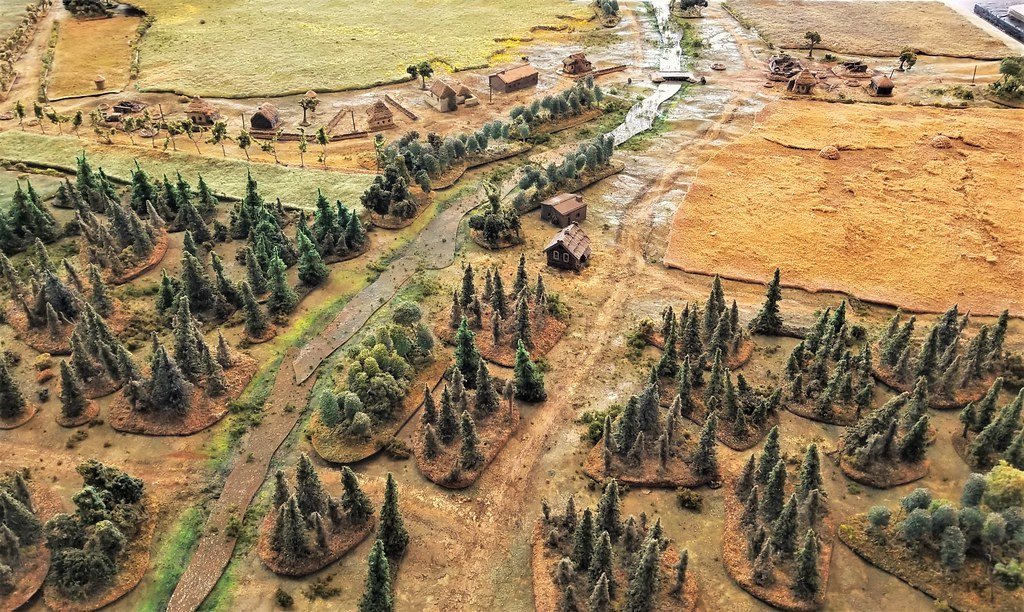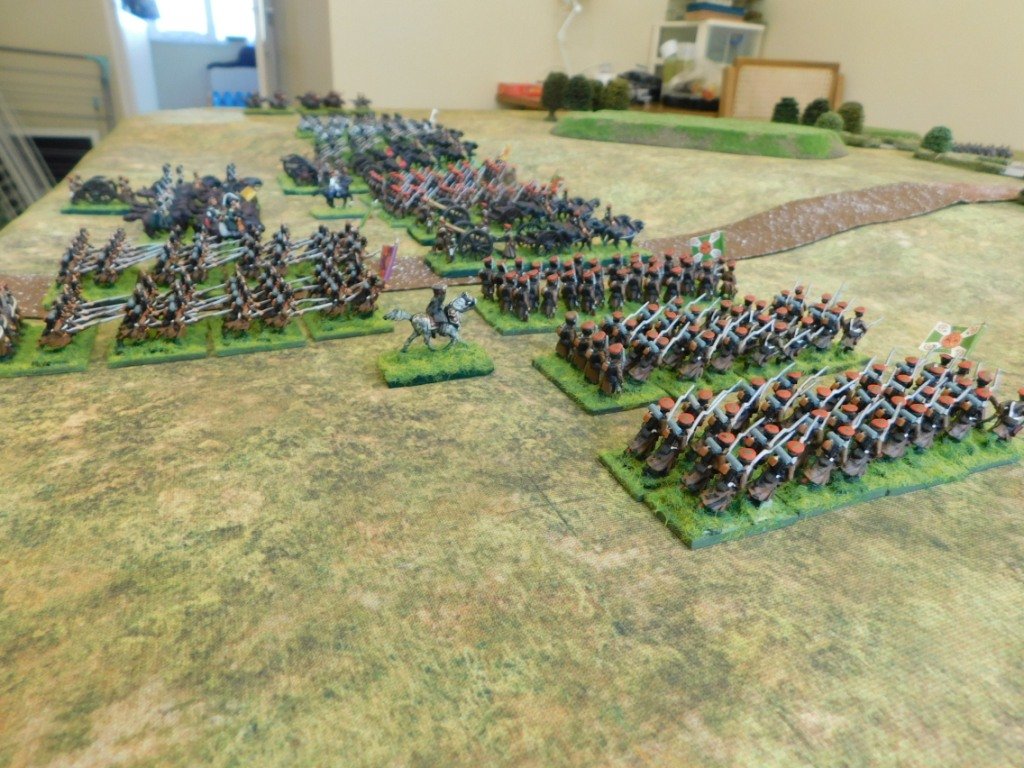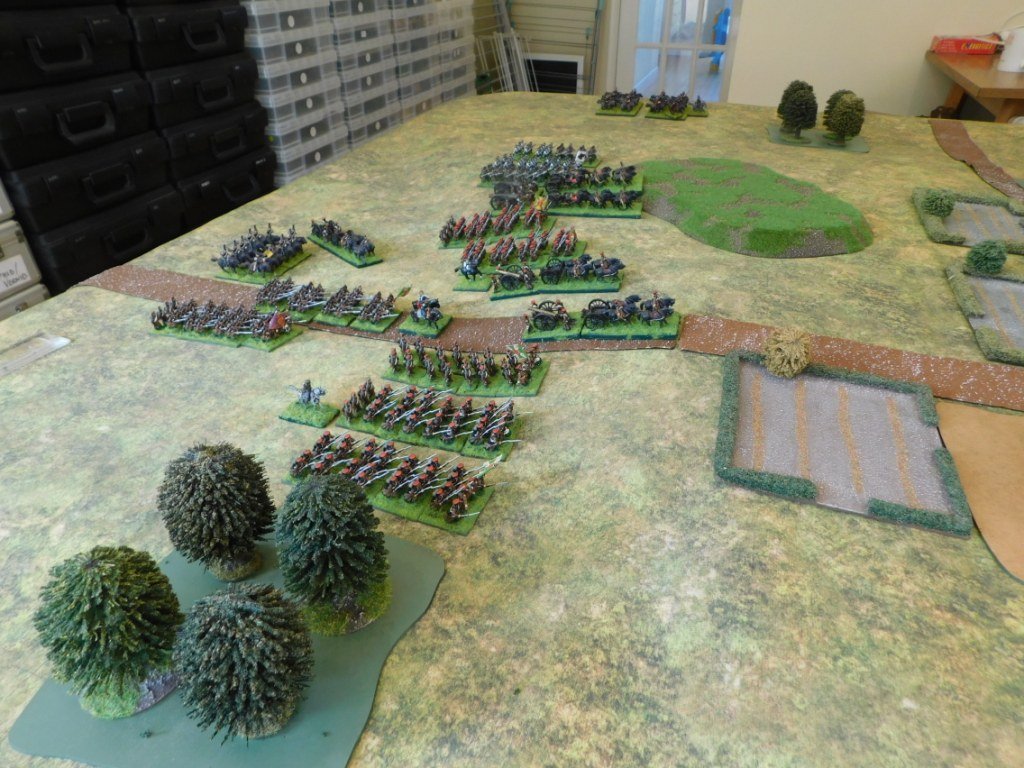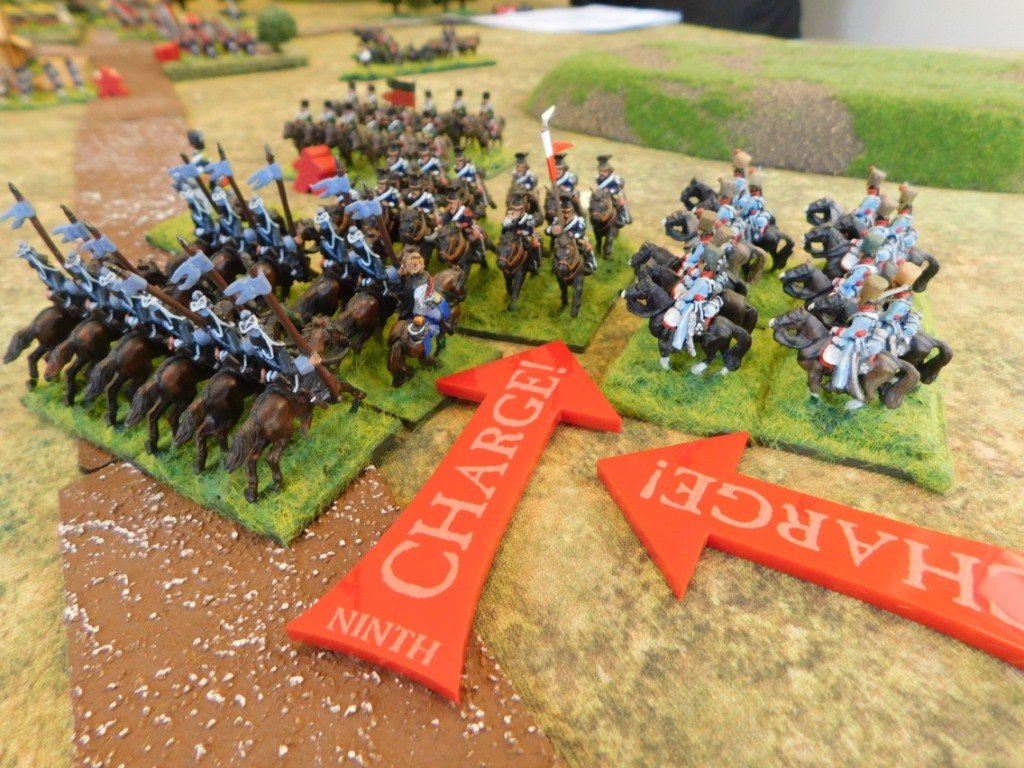The Battle Itself
The battle itself divided neatly into two halves: with action taking place on either side of but not along the road that ran up the centre of the field.
On the Cossack left flank, the tabor trundled forward with the Tatar horse easily keeping pace. Opposite them, the pike-heavy Swedish battalia advanced in a slightly ragged line, with the orphan brigade of cavalry behind them.
As the two sides got closer, the tabor turned and deployed ready for action, quickly opening fire with their light guns and muskets. One Swedish battalia was disordered by their fire, so the Tatar horse archers moved forward and double-disordered them with bowfire.
This was too good an opportunity to miss: the veteran Tatar Noble Lancers charged the disordered pike and smashed them from the table! Behind the pike were the Cuirassiers, but they were also dashed from the field by the rampaging Tatars. Unfortunately, the exhausted Nobles were then dispersed by the Reiters accompanying the cuirassiers, but they in turn were then routed by the horse archers following up their Noble comrades.
Meanwhile, one tabor was locked in combat with a battalia of pikemen. The action swayed back and forth, but the Swedish pike were too strong, and the tabor’s crew fled the field.
That was, however, the limit of Swedish success on this flank. Another battalia was hit in the flank and routed by horse archers, and as the battle on the other side of the field reached its climax, more Swedish infantry were about to be charged in the rear by the rampant Tatar horse: the combination of fortress-like tabor shooting any enemy that moved and the nimble Tatar horsemen proving a winnig combination.














